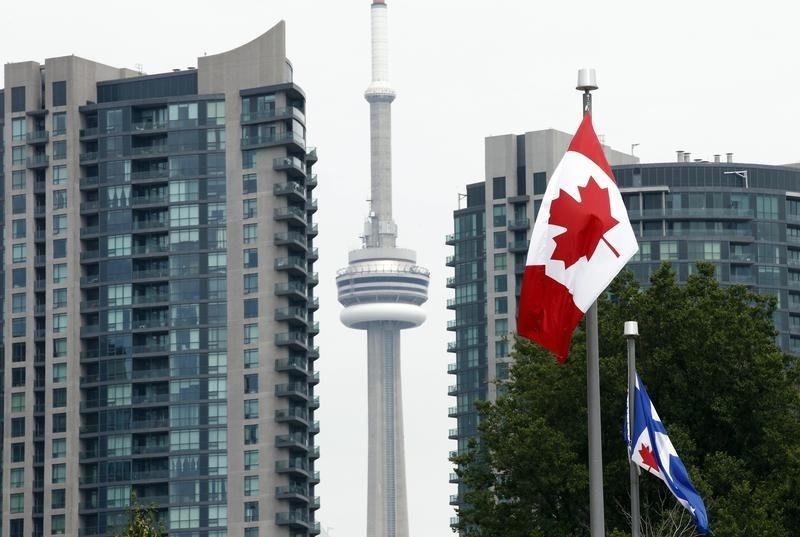Equal pay for all genders is expected in Canada, but it remains far from reality. According to the Canadian Women’s Foundation, a woman earns just 84 cents for every dollar a man makes, leaving a 16% pay gap. This is a significant disparity, especially when compared to countries like Iceland, where the gender pay gap is around 5%. This doesn’t even include the compounded financial burdens faced by racialized women and women with disabilities, where the pay gap is even more significant.
This content was originally published by Zoocasa. View original content and infographics here.
Ultimately, the pay gap translates to affordability in all areas of life, including housing. This report delves into how these disparities are directly linked to income inequality. To put it into perspective, imagine if men were required to pay 16% more for a home—that would mirror the financial disadvantage women face due to the pay gap. Conversely, if the pay gap favored women, they’d pay 16% less for the same property, aligning with their reduced earnings.
To investigate how the gender pay gap affects housing affordability, Zoocasa analyzed average home prices, down payments, and rental costs across major Canadian cities to illustrate how much this disparity adds up over time.
The Gender Divide in Home Savings: How Much Longer Women Wait
The wage disparity feels even more evident in how long it takes to save for a down payment in different markets. Imagine a man’s take-home pay is $100,000, while a woman in the same role earns $84,000 due to the gender pay gap. Using the Canadian Real Estate Association’s (CREA) CREA’s August 2024 report on average home prices, we calculated how long it would take each to save for a minimum down payment, assuming they save 7.2% of their annual income, which aligns with Statistics Canada’s Q3 2024 household savings rate.
In this scenario, if men save 7.2% of their annual salary, it would take them 17 years and three months in Calgary and 11 years and eight months in Edmonton to save for a down payment. For women, however, it would take longer—20 years and seven months in Calgary and 13 years and 11 months in Edmonton—due to the gender pay gap.
Even if men double their savings rate to 14.4%, reaching their savings goal would take eight years and seven months in Calgary and five years and ten months in Edmonton. For women, the timeline is still longer: 10 years and three months for the average down payment in Calgary and six years and 11 months in Edmonton. This clearly illustrates how the pay gap accumulates over time.
How Income Disparities Impact Rising Home Prices
The difference of 16% becomes even more significant when applied to Canada’s rapidly rising home prices. For instance, the average home price in Victoria would climb from $948,000 to $1.1 million. In Fraser Valley and Hamilton–Burlington, prices would also cross the million-dollar threshold. Greater Toronto’s average home price has jumped from $1,074,542 to $1.2 million, aligning with Vancouver’s current price levels. Meanwhile, prices in Greater Vancouver have increased by $200,612.
As of August 2024, CREA reported the national average home price at $649,096. An upward adjustment of 16% would boost that figure to $752,951, while a reduction would bring it down to $545,241.
The average home price in one of Canada’s more affordable markets—Saint John—is $371,628.
A 16% rise would push it to $431,088, while a decrease of the same percentage would lower it to $312,168.
Notably, 20% of the analyzed cities show price differences exceeding $150,000, further amplifying the affordability challenges that paying 16% more—or saving 16% less—can present.
Affordable Housing? How the Gender Pay Gap Alters Rent Reality
If rents were adjusted by 16% to reflect the gender pay gap, nearly 87% of one-bedroom apartments across Canada would fall below $2,000 a month—a significant difference from today’s prices.
When the pay gap is factored in, rent for a one-bedroom apartment in more affordable markets like Saskatoon would still rise by $200 per month. Over time, that equals $1,200 more in savings each year. With this example, Winnipeg’s rent increased by $278, from $1,740 to $2,018. Quebec City’s rent rose by $251, from $1,570 to $1,821.
These examples highlight how even moderate rent hikes, when coupled with the gender pay gap, significantly impact housing affordability for women.
The Persistent Effects of Income Imbalance
When we look at the overall picture, it’s clear that the gender pay gap significantly magnifies financial inequality in housing. Women earn less and face more difficulty saving for homeownership, which impacts renting and even managing monthly expenses to save for a down payment.
Despite the additional hurdles women face, according to the Pew Research Center, single women accounted for 58% of the nearly 35.2 million homes owned by unmarried Americans in 2022, while single men owned 42%.
While progress has been made toward gender equality in many areas, the impact of income disparity is still profound, especially as inflation and the cost of living rise and women remain single longer. These challenges have a compounding effect over time. Tackling this issue requires a broader conversation about affordability, access, and the critical role income equality plays in leveling the playing field for everyone.
